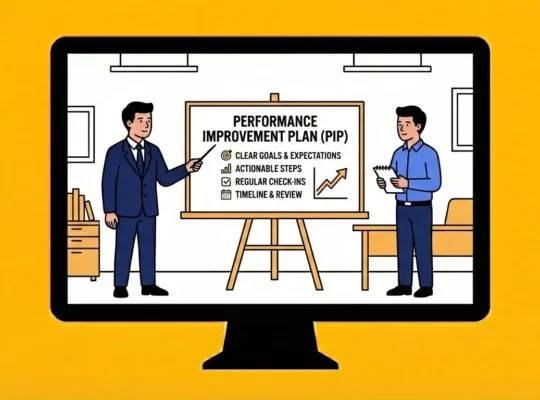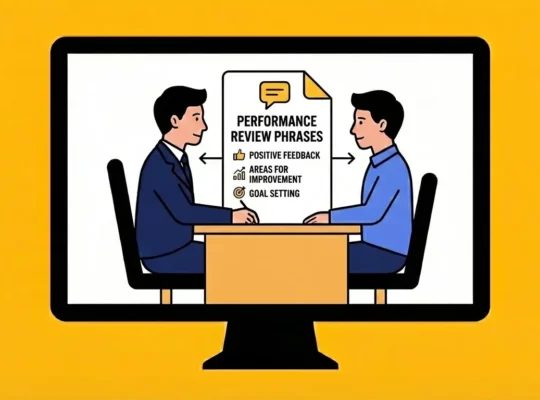Did you know that a whopping 84% of employees value psychological safety above all else? In today’s fast-paced and often stressful work environment, feeling safe and supported is more important than ever. Psychological safety is the foundation for a thriving workplace culture and psychological safety exercises are the key to unlocking your team’s full potential.
Table of Contents
- Defining Psychological Safety
- Why Psychological Safety Exercises Matter
- Top Psychological Safety Exercises
- Role of Leadership in Psychological Safety
- Embedding Psychological Safety in Day-to-Day Practices
- Tools and Tech to Support Psychological Safety in Hybrid Teams
Defining Psychological Safety
Psychological safety, as defined by Professor Amy Edmondson and demonstrated in Google’s Project Aristotle, is the belief that one will not be humiliated or penalized for speaking up with ideas, concerns, or mistakes.
Creating a psychologically safe environment is critical for innovation and team success. Without this foundation, teams struggle to communicate openly and effectively, leading to missed opportunities for growth.
It’s not just about avoiding harassment or overt issues—it’s about fostering an environment where creativity can flourish, mistakes can become learning moments, and team members feel genuinely supported.
Fostering Innovation Through Psychological Safety
Have you ever been in a team meeting where everyone’s nodding along, but no one’s actually saying anything? That’s the opposite of psychological safety. In fact, only 26% of leaders prioritize psychological safety within their companies. When employees feel comfortable speaking their minds, sharing ideas, and even admitting mistakes, magic happens.
Psychological safety is the secret sauce for innovation. Teams that feel safe to experiment, question, and challenge the status quo are more likely to:
- Take Risks: When employees feel supported, they’re more willing to try new things and step outside their comfort zones.
- Share Knowledge: A culture of openness encourages the free flow of ideas and knowledge sharing, leading to better decision-making.
- Ask Tough Questions: Challenging the status quo is essential for growth. Psychological safety empowers employees to ask tough questions that can lead to breakthroughs.
Why Psychological Safety Exercises Matter
Psychological safety is the cornerstone of high-performing teams, regardless of whether they work remotely, in a hybrid setting, or in situ. These exercises create a foundation of trust that fosters open communication, collaboration, and creativity.
Why Psychological Safety Matters:
- Trust is the Foundation: Psychological safety is essential for building trust among team members. When people feel safe, they are more likely to be open and honest with each other, leading to stronger relationships and better collaboration.
- Enhanced Communication: These exercises improve communication skills and help team members feel comfortable sharing their ideas and concerns. This open communication is vital for effective teamwork and problem-solving.
- Innovation Hub: Psychological safety encourages employees to speak up, share ideas, and challenge the status quo. This fosters a culture of innovation and creativity, where team members feel empowered to contribute their best.
Benefits for Remote and Hybrid Teams:
- Bridging the Digital Divide: Remote and hybrid teams often miss out on the non-verbal cues that build trust in-person. Psychological safety exercises help bridge this gap by ensuring that communication remains open and inclusive, even across digital platforms.
- Fostering a Sense of Community: These exercises can help remote and hybrid teams feel more connected and engaged. When team members feel safe and supported, they are more likely to go the extra mile and collaborate effectively.
- Building Resilience: Psychological safety helps team members develop resilience and the ability to cope with challenges. This is especially important for remote and hybrid teams, who may face unique stressors.
Top 10 Psychological Safety Exercises
1. Personal Histories
Inspired by the wisdom of Patrick Lencioni, this exercise encourages team members to share personal glimpses that go beyond the surface level. By revealing non-invasive yet meaningful details about themselves, team members can build deeper connections and foster a sense of empathy.
How it Works:
- Set the Stage: Begin by establishing a safe and comfortable environment where everyone feels free to share.
- Choose a Prompt: Select a prompt that encourages meaningful sharing, such as “Where did you grow up?” or “What’s your favorite hobby?”
- Share and Listen: Have each team member share their response, creating a space for active listening and understanding.
Benefits:
- Builds Trust: Sharing personal details fosters a sense of vulnerability and trust among team members.
- Enhances Empathy: Understanding each other’s backgrounds and experiences promotes empathy and understanding.
- Fosters Connection: Personal histories can create common ground and strengthen bonds between team members.
2. Personal Stories in Pairs
Personal Stories in Pairs is a simple yet effective team-building exercise that encourages empathy, understanding, and connection. By sharing personal stories, team members can develop a deeper appreciation for each other’s experiences and perspectives.
How it works:
- Pair Up: Divide the team into pairs.
- Share Stories: Each pair takes turns sharing a meaningful personal story. The stories can be about anything that is important to the speaker, such as a personal accomplishment, a challenge they overcame, or a memorable experience.
- Retell the Story: After listening to their partner’s story, each person retells the story in their own words.
- Discussion and Reflection: Discuss the experience and reflect on what you learned about your partner and yourself.
Benefits of Personal Stories in Pairs:
- Builds Empathy: By hearing each other’s personal stories, team members can develop a deeper understanding of each other’s experiences and perspectives.
- Fosters Connection: Sharing personal stories can help to build stronger relationships and a sense of community within the team.
- Encourages Open Communication: This exercise can encourage open and honest communication, which is essential for effective teamwork.
- Improves Listening Skills: Listening attentively to each other’s stories can help to improve listening skills and understanding.
3. Stop, Start, Continue
Stop, Start, Continue is a versatile feedback exercise that encourages open communication and self-reflection within teams. By identifying actions to stop, start, or continue, team members can provide constructive feedback and identify areas for improvement.
How it Works:
- Individual Reflection: Team members individually consider their actions and behaviors within the team.
- Share Feedback: In a safe and supportive environment, team members share their “stop, start, continue” feedback with each other.
- Discussion and Action: The team discusses the feedback and identifies areas for improvement. Action plans can be created to address the “stop” and “start” feedback.
Benefits of Stop, Start, Continue:
- Fosters Open Communication: Encourages team members to share their thoughts and perspectives honestly.
- Identifies Areas for Improvement: Helps teams pinpoint areas where they can improve their performance and processes.
- Celebrates Successes: Provides an opportunity to recognize and celebrate positive behaviors and accomplishments.
- Builds Trust: Creates a culture of trust and support among team members.
4. Desert Island Discs
Desert Island Discs is a classic team-building exercise that encourages participants to share their favorite music choices as if they were stranded on a deserted island. This lighthearted activity can be a great way to break the ice, foster camaraderie, and reveal personal stories that can help team members bond on a deeper level.
How it works:
- Set the Stage: Begin by explaining the concept of the exercise and emphasizing the importance of sharing openly and honestly.
- Choose the Format: Decide whether you want participants to share their top five songs, albums, or artists.
- Share and Discuss: Have each team member share their choices and explain why they selected them. Encourage participants to share personal stories or memories associated with their music selections.
- Discussion and Reflection: After everyone has shared their choices, engage in a discussion about the music and the insights it reveals about each team member.
Benefits of Desert Island Discs:
- Breaks the Ice: This exercise can be a fun and engaging way to get team members talking and interacting with each other.
- Reveals Personality: Music choices can often reveal a lot about a person’s personality, interests, and values.
- Fosters Connection: Sharing personal stories and preferences can help team members bond on a deeper level and build stronger relationships.
- Encourages Creativity: Music can be a powerful source of inspiration and creativity. This exercise can spark new ideas and perspectives.
5. Uncovering the Stinky Fish
The “stinky fish” metaphor is a powerful tool for identifying and addressing underlying issues within a team. Just as a bad fish can quickly spoil an entire meal, unresolved concerns can negatively impact team dynamics and overall performance.
Similar to the concept of employee reviews, this exercise allows employees to express their opinions freely and without fear of repercussions.
Steps to Facilitate:
- Create a Safe Space: Establish a clear understanding that this exercise is meant to be a safe and non-judgmental space for sharing concerns.
- Individual Reflection: Ask team members to identify and write down any unresolved issues or concerns they may be experiencing. Encourage them to be honest and open.
- Share Anonymously (Optional): If desired, allow team members to share their concerns anonymously to further encourage openness.
- Guided Discussion: Facilitate a discussion where team members can share their concerns and discuss potential solutions. Encourage active listening, respectful dialogue, and a focus on finding common ground.
Benefits of the “Stinky Fish” Exercise:
- Uncovers Hidden Issues: Bring to light concerns that may be affecting team dynamics but are not openly discussed.
- Fosters Open Communication: Creates a safe space for honest and open dialogue.
- Builds Trust: Demonstrates a commitment to addressing concerns and creating a positive work environment.
- Improves Team Dynamics: Helps to resolve underlying issues and strengthen team relationships.
6. Anxiety Party
On the same note, an anxiety party is a unique team-building exercise developed by Google Ventures that aims to create a safe and supportive space for team members to share their anxieties and find solutions together.
How it works:
- Anonymous Notes: Each team member writes down their anxieties on small pieces of paper.
- Sharing and Discussion: The notes are collected and shared anonymously with the team. Team members then discuss the anxieties and brainstorm ways to address them.
- Support and Solutions: The goal is to create a supportive environment where team members can offer encouragement, advice, and potential solutions to each other’s anxieties.
Benefits of the Anxiety Party:
- Reduces Stress: By openly discussing anxieties, team members can reduce feelings of stress and isolation.
- Fosters Empathy: Understanding each other’s concerns can promote empathy and compassion within the team.
- Builds Trust: This exercise can help to build trust and strengthen team bonds.
- Improves Productivity: Addressing anxieties can lead to increased productivity and job satisfaction.
7. Post-it Note Brainstorming
Post-it Note Brainstorming is a simple yet effective technique that encourages equal participation and fosters creativity within teams. By writing ideas on sticky notes and placing them on a shared board, team members can visually organize their thoughts and generate new ideas.
How it works:
- Prepare the Board: Set up a whiteboard or a large sheet of paper where team members can stick their notes.
- Distribute Notes: Provide each team member with a stack of sticky notes.
- Brainstorm Individually: Encourage team members to brainstorm ideas on their own and write them down on their sticky notes.
- Share and Discuss: Once everyone has finished brainstorming, have them place their sticky notes on the board and discuss the ideas as a group.
Benefits of Post-it Note Brainstorming:
- Equal Participation: This method ensures that everyone’s voice is heard, even quieter team members.
- Visual Organization: Sticky notes allow for a visual representation of ideas, making it easier to see patterns and connections.
- Creativity Boost: The visual nature of this technique can stimulate creativity and help generate new ideas.
- Reduced Dominance: By writing down ideas individually, dominant personalities are less likely to dominate the discussion.
8. Spectrums Activity
The Spectrums Activity is a fun and engaging way to explore the diversity of thought within a team. By physically moving along a spectrum, team members can visually express their preferences or opinions on various prompts.
How it works:
- Choose Prompts: Select a variety of prompts that are relevant to your team, such as:
- “How much do you enjoy working remotely?”
- “How comfortable are you with taking risks?”
- “How important is work-life balance to you?”
- Create a Spectrum: Draw a line on the floor or a whiteboard to represent a spectrum. Label the ends of the spectrum with opposite options (e.g., “Strongly Agree” and “Strongly Disagree”).
- Facilitate the Activity: Ask team members to physically move along the spectrum to indicate their position on each prompt.
- Discuss and Reflect: After everyone has positioned themselves, facilitate a discussion about the results and the insights gained.
Benefits of the Spectrums Activity:
- Visual Representation of Diversity: The activity provides a clear visual representation of the diversity of thought within the team.
- Encourages Participation: Everyone can easily participate and express their opinions.
- Fosters Understanding: The activity can help team members understand and appreciate different perspectives.
- Breaks the Ice: It can be a fun and engaging way to break the ice and get to know your team members better.
9. Virtual Sticky Notes
In today’s increasingly remote work environment, virtual sticky notes have become an essential tool for fostering collaboration and creativity. Platforms like FigJam and Miro allow teams to brainstorm, share ideas, and provide feedback in a visual and engaging way, even when they are physically separated.
How it works:
- Choose a Platform: Select a virtual whiteboard tool like FigJam or Miro that suits your team’s needs.
- Create a Board: Create a new board and invite team members to join.
- Start Brainstorming: Encourage team members to add their ideas to the board using virtual sticky notes.
- Organize and Discuss: Organize the sticky notes into categories or themes and facilitate a discussion to explore the ideas in more detail.
Benefits of Virtual Sticky Notes:
- Asynchronous Collaboration: Allows team members to contribute ideas at their own pace, regardless of time zone differences.
- Visual Organization: Provides a clear and organized way to visualize and discuss ideas.
- Encourages Participation: Everyone can contribute their ideas, even those who may be hesitant to speak up in a traditional meeting.
- Fosters Creativity: The visual nature of sticky notes can stimulate creativity and help generate new ideas.
10. Virtual Coffee Chats
In the age of remote work, it’s easy for employees to feel disconnected from their colleagues. Virtual coffee chats offer a simple yet effective way to foster personal connections and build a sense of community within remote teams.
How it works:
- Pair Up: Randomly or intentionally pair team members for one-on-one virtual coffee chats.
- Set a Time: Schedule regular virtual coffee chats, ensuring that everyone has an opportunity to connect.
- Casual Conversation: Encourage participants to chat about topics beyond work, such as hobbies, interests, or current events.
Benefits of Virtual Coffee Chats:
- Fosters Personal Connections: Helps team members get to know each other on a personal level.
- Reduces Isolation: Can help combat feelings of isolation and loneliness that are common among remote workers.
- Improves Communication: Provides a casual setting for team members to practice communication skills and build rapport.
- Enhances Collaboration: Stronger personal connections can lead to better collaboration and teamwork.
Role of Leadership in Psychological Safety
Inspired by Simon Sinek’s principle of “Leaders Eat Last,” the Leaders Go Last exercise is a simple yet powerful way to foster a more inclusive and collaborative team environment. By allowing team members to speak first, leaders can create a space where everyone feels comfortable expressing their ideas and opinions.
How it works:
- Establish the Rule: Clearly communicate the “Leaders Go Last” rule to your team, ensuring that everyone understands the purpose and importance of this approach.
- Facilitate Discussions: During team meetings or discussions, encourage team members to speak first before you offer your input.
- Listen Actively: Demonstrate active listening by paying attention to what others have to say and avoiding interrupting.
- Provide Balanced Feedback: Once everyone has had a chance to speak, offer your insights and feedback in a constructive and supportive manner.
Benefits of Leaders Go Last:
- Empowers Team Members: Allows team members to feel heard and valued.
- Fosters Collaboration: Encourages open and honest communication among team members.
- Improves Decision-Making: Ensures that a variety of perspectives are considered before making decisions.
- Builds Trust: Demonstrates a commitment to leadership by putting the needs of the team first.
Embedding Psychological Safety in Day-to-Day Practices
Regular Check-Ins and Mental Health Support
Regularly scheduled check-ins allow team members to share how they are feeling, both professionally and personally. This practice supports mental health and ensures that psychological safety is prioritized.
Anonymous Feedback Channels
Offering anonymous feedback channels such as Review.jobs helps ensure that employees can voice their concerns or suggestions without fear of repercussion, fostering continuous improvement and open dialogue.
By combining anonymous feedback channels with open communication and a commitment to action, you can create a more positive and productive work environment where everyone feels valued and heard.
Tools and Tech to Support Psychological Safety in Hybrid Teams
Asynchronous tools like Slack, Loom, and FigJam offer transparency and flexibility, allowing teams to communicate and collaborate seamlessly across time zones.
Benefits of Asynchronous Tools:
- Flexibility and Accessibility: These tools enable team members to work at their own pace and access information whenever needed.
- Transparent Communication: Asynchronous communication can help to reduce misunderstandings and ensure that everyone is on the same page.
- Documenting Decisions: Tools like Slack and FigJam allow teams to document decisions and share them with everyone, providing a sense of transparency and accountability.
- Building Trust: By fostering open and transparent communication, these tools can help to build trust and relationships among team members.
Additional Tips for Using Asynchronous Tools Effectively:
- Establish Clear Communication Guidelines: Set expectations for response times, document sharing, and meeting etiquette.
- Use Visual Aids: Utilize tools like Loom to record videos or screen shares, which can help to clarify complex ideas or instructions.
- Encourage Regular Check-Ins: Schedule regular check-ins or team meetings to discuss progress, address any concerns, and maintain a sense of connection.
At Review.jobs, we encourage teams to implement these psychological safety exercises regularly to strengthen collaboration, trust, and communication. The result will be a high-performing team that’s not just efficient but also motivated and engaged, driving both individual and organizational success.





